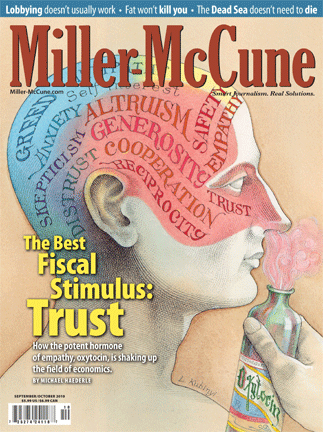Although a discouraged office seeker fired the shot, the nation’s best doctors probably killed U.S. President James A. Garfield. After Garfield survived the first night of the July 1881 shooting (much to everyone’s surprise), his doctors decided their best course was to get that nasty lead out of the president. So for the next 11 weeks, they poked and probed with unsterilized instruments and bare hands — the fingers of 15 different doctors pushed into the president’s side that first night — looking for the slug.
Even though Joseph Lister‘s germ theory was not consulted during Garfield’s agony, one technological fix was tried three weeks after the shooting. Alexander Graham Bell rigged up a metal detector to find the .44-caliber slug. Bell’s failure approached the comic: Besides looking in the wrong part of Garfield’s body, no one realized the president’s bed had a metal frame.
But the important consideration was to be doing something, even if it was something ill advised or in violation of recent medical learning about, say, sterile instruments.
The need to do something, or be seen doing something, has been the parent of loads of legislation, much of it bearing out Grandma’s warnings that haste makes waste. As the commentariat assures us, quiet introspection pales before, well, kicking ass (even if the keister kicking is more rhetorical than actual).
Of late, the Gulf of Mexico has seen some excellent examples of what we might call the Garfield Impulse. An immediate moratorium on new drilling, anyone?
In This Issue
Lobbying doesn’t usually work; fat won’t kill you; and the Dead Sea doesn’t need to die. Check out those stories, our cover story on oxytocin shaking up the field of economics and much more in the September-October 2010 issue of Miller-McCune magazine.

At times, of course, the impulse to act is not just justified but necessary; when the Deepwater Horizon blew up, disgorging untold numbers of barrels of Precambrian goo into a prime fishing ground, something did indeed need to be done, and quickly. Now, with the capping reasonably complete, we’ll leave it to the historians of engineering to tell us if the various top hats (No. 10 seems to have done the trick) and Avatar producer’s submarines were useful — or the drillers’ equivalent of the president’s grubby-fingered physicians.
Since the horse was still in the process of escaping the barn, trying to shut the door as soon as possible was a legitimate priority. As renewable-energy whiz kid James Dehlsen explained to Miller-McCune.com, the tens of thousands of ideas that bubbled up to tamp down the spill — his own among them — proved too much for BP or the government to absorb on the fly. We hope that someone examines that wealth of sage spill-stopping advice before the next disaster.
Once the oil was in the water, responders were on firmer ground, so to speak, about tackling the orange tide. Oil companies and researchers have a wealth of hard-won knowledge about addressing oil spills — even if the technology in that regard hasn’t really advanced since the Exxon Valdez spill. Again, however, much as Garfield’s attendants ignored germ theory, some promising help, whether Midwestern hay or Belgian expertise, has been ignored or dismissed because it might get in the way of being seen to do enough. A similar unwillingness to face uncomfortable choices leads to exceptional numbers of man-hours spent cleansing oil-soaked birds, when those hands might have been used to less intimate but more important effect.
Even when a quick response to disaster may help — as Bell’s metal detector might have helped Garfield — clumsy application can get in the way. Absorbent booms were seen as a way to curtain off sensitive or popular shorelines from the advancing oil, but as anyone who caught the viral Internet audio about “booming school 101” and its reception in the oil industry now suspects, there weren’t enough booms to do the job, and the people laying them were sometimes intentionally ignorant of their best use.
At least booms could do some good when properly applied. Other solutions, like the sand berms pushed by the governor of Louisiana, seem like a classic manifestation of the Garfield Impulse, with the science behind the measure murky but the politics crystal clear. Meanwhile, the sad fact that efforts — using current best practice — to clean up soiled beaches can prove devastating to sensitive seashores immediately provokes cries of sellout from the left. Miller-McCune.com’s “Oil Cleanup Cure May Be Worse than Disease,” for example, earned the comment, “How much did British Petroleum pay you to say that?”
We’re still waiting for the check …




